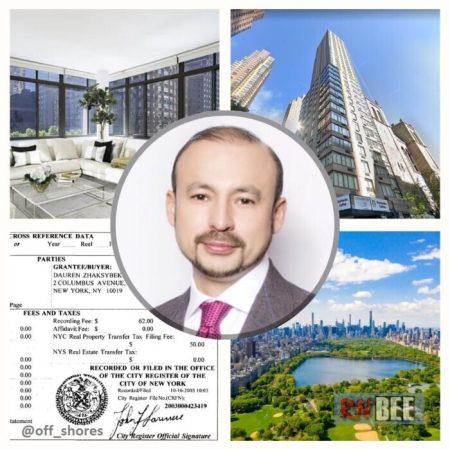Ministry of Regional Development disappeared. Anatoly Tkachuk's comment
Is Ukraine falling behind in global competitiveness? Ukraine has historically struggled with the effectiveness of public institutions and infrastructure, ranking 85th overall and 104th for institutions in 2019. The country is undergoing changes in its public institutions, which could have unexpected consequences.
Ukraine is experiencing another change in its public institutions with Government Decree No. 1343 from December 2, 2022, which will likely be analyzed by Ukrainian and European experts, potentially leading to unforeseen consequences.
But let's examine the aforementioned resolution. There are several aspects to consider in order to anticipate the impact on state regional policy, which is crucial for the European Union and even more important for Ukraine. The decree reads:
- “The Ministry of Infrastructure will be renamed the Ministry of Development of Communities, Territories and Infrastructure of Ukraine.
- The Ministry of Development of Communities and Territories will be combined with the Ministry of Development of Communities, Territories and Infrastructure.
At first glance, a “Big Ministry of Regional Development” is being established, tasked with handling regional policy, regional development, and necessary infrastructure. However, this is not the case, as Cabinet of Ministers of Ukraine Decree No. 1400 from December 17, 2022 approves a new version of the Regulations on the Ministry of Infrastructure, which, following Decree No. 1343, should be named the “Ministry for the Development of Communities, Territories and Infrastructure of Ukraine”. According to the new Regulation:
“one. The Ministry for the Development of Communities, Territories and Infrastructure of Ukraine (Ministry of Infrastructure) is the central executive body, whose activities are directed and coordinated by the Cabinet of Ministers of Ukraine.
The Ministry of Infrastructure is the main body in the system of central executive bodies that ensures the formation and implementation of the state policy:
in the field of road, rail, sea and inland water transport, the provision of postal services, and also ensures the formation and implementation of state policy in the field of air transport and the use of the airspace of Ukraine, tourism and… – a bunch of other things, except for “state regional policy” or “regional development policy.”
Therefore, the Ministry of Infrastructure retains its name, while the Ministry of Regional Development simply disappears, becoming a part of infrastructure. This signals the end of the era for forming and implementing state regional policy in line with EU standards and Ukraine's efforts to integrate quickly into the EU.
There is no longer an institution in Ukraine that focuses on state regional policy.
Will Ukrainians and Europeans be able to grasp the state regional policy in Ukraine as a whole?
Ukraine was established from territories that were previously part of different states, resulting in significant socio-cultural differences related to religion, language, and traditions. Moreover, there are variations in settlement patterns, competitive advantages (such as ports) or limitations (such as mountains, swamps), urbanization levels, industrialization, and per capita GRP across regions.
Russia has always used these differences to create chaos first in the political arena in Ukraine, and later to start a war against the entire country.
Efforts to understand our own regional policy started in 1999 and concluded with the President of Ukraine's Decree No. 341/2001 "On the Concept of State Regional Policy" of May 25, 2001, which led to the establishment of the Ministry of Regional Development until 2003.
In 2004, Ukraine experienced significant turmoil due to the escalation of interregional conflicts: Maidan 2004-2005, separatist congress in Severodonetsk. All this indicated the absence of an adequate regional policy, which was much needed. However, public bodies, and not a single ministry, shaped this policy.
The establishment of the ministry responsible for state regional policy was delayed until 2007, and its formation was complicated because the concept of “state regional policy” was not fully understood by politicians: they questioned the allocation of funds and the impact on voters.
However, the existence of such a ministry led to a fundamental reform of local self-government and the territorial organization of power in Ukraine, which became a significant symbol of Ukraine's success. Now, Ukrainian reform is being studied and adopted in various European countries.
In recent years, Ukraine has developed a comprehensive framework for the creation and implementation of state regional policy, which aligns with the best European practices in terms of structure and functional content. It has established a system of planning documents for state regional policy; The State Strategy for Regional Development of Ukraine-2027 includes advanced models of territorial development based on different functional types of territories that require specific state development support or intervention to prevent degradation. A new system for financing regional development was introduced – the State Regional Development Fund, and the use of regional development programs was piloted, aligning with the operational objectives of the state strategy, including a program aimed at achieving cohesion in the Ukrainian space.
Most importantly, the progress made in the field of state regional policy in recent years shifted the focus of politics from structures to people and from objects to projects. While not everything has been successful, the changes appeared to be irreversible.
The Ministry of Regional Development has been disbanded. Comment by Anatoly Tkachuk
“State regional policy is a system of goals, measures, means and coordinated actions of central and local executive authorities, authorities of the Autonomous Republic of Crimea, local governments and their officials to ensure a high level of quality of life for people throughout Ukraine, taking into account natural, historical , environmental, economic, geographical, demographic and other features of the regions, their ethnic and cultural identity” (Law “On the principles of state regional policy”).
The ministry has been disbanded. What about in the EU?
In the EU, the significance of regional policy is directly outlined in the Treaty on the Functioning of the European Union, which dedicates five articles to “economic, social and territorial cohesion” (Articles 174-178).
The critical article here is Article 174, which forms the basis for the other articles and the resources for the policy of cohesion and regional development.
The Union works to make all its parts stronger economically, socially, and in their land, to achieve overall harmony.
The Union aims to lessen the gaps between different regions' development levels and help less advanced regions.
Special attention is focused on rural areas, regions affected by industry changes, and areas with ongoing natural or demographic challenges, like very sparsely populated regions in the far north, islands, border areas, and mountainous regions.
The EU has allocated 392 billion euros for economic, social, and territorial cohesion, to be distributed through specific funds from 2021 to 2027.
Article 174 is relevant for Ukraine, and Ukrainian regional policy seems to be based on this article, emphasizing the importance of positive impacts on space cohesion, reducing disparities, and improving human life in less developed regions.
What's next for the Ministry of Regional Development?
Ukraine is at war, with many territories occupied and millions of people displaced within and outside the country. There's been widespread destruction of industrial, infrastructure, social facilities, and housing, along with large areas of agricultural land being out of use. What kind of recovery or revival policy is needed now?
There are slogans about restoring and improving what was destroyed. However, questions arise about the need for restoration, who should be rehabilitated, and whether there will be enough resources.
Much of the destroyed infrastructure was built over 30 years ago when Ukraine's population was around 50 million. It's estimated that prior to the invasion, the population was about 41 million, and without accounting for those who left because of the war, the current population is likely not more than 34.5 million.
About 2.7 million displaced persons in Ukraine may not return to their former residences, leading to differences in planning for revival compared to the Ministry of Regional Development's restoration concept.
The idea of bringing back local communities, regions, and countries is seen as an important step in the future after the war. This idea is now part of the latest changes to the Law “On the Principles of State Regional Policy”. The central executive body was supposed to do this, as mentioned in the law.
Currently, there is no such body in Ukraine. The Ministry of Infrastructure, according to its position, is not the right body for this. This seems odd. If there's no dedicated body, there won't be effective politics. We've seen this happen before. The full name of the “newly formed” ministry still gave some hope, but the short name and the content of the Ministry’s regulations dashed that hope.
I would like to believe that the discrepancy between the short name and the full name, and the absence in the regulations of the provision stating that this ministry is the central executive body responsible for forming and implementing state regional policy – is only a result of rushing and not a deliberate deviation from the essence and content of the state regional policy outlined in Ukrainian laws.
From the time when the first concept of the state regional policy came up in 2001 to the point where this policy goal was established:
“The goal of the state regional policy is to create conditions for the dynamic, balanced development of Ukraine and its regions, to ensure their social and economic unity, to improve the living standards of the population, to create safe conditions, to comply with state-guaranteed social standards for every citizen, regardless of his place of residence”,
—almost 15 years have gone by. Can it really be undone with one decision in a day?
Will the Ukrainian territorial communities and our European partners, from whom we expect funds for the restoration of the regions, understand these changes?
P.S.If we expect to get European funds for restoration, we need to show the Europeans that we can plan, use, and oversee these funds in line with European practices based on Ukrainian laws, which should be aligned with the European ones. Ukrainian legislation related to state regional policy, the government structure in this field, and the system of planning documents have seemed quite systematic and logical until recently.
To preserve these achievements, it's important to urgently amend the regulation on the Ministry of Infrastructure, change the Ministry's name to the Ministry of Regional Development, and include in the provisions the requirement that this ministry is responsible for forming and implementing the state regional policy.
And to not lose experienced and motivated people during this reorganization who can carry out a modern regional policy in Ukraine. It's also important to note that infrastructure is part of regional policy and a means for regional development, and not the other way around. Even decentralization is part of state regional policy, as it involves responsible and effective institutions.
Anatoly Tkachuk
Director for Science and Development of the Institute of Civil Society
DOSSIER: Alexey Chernyshev: from the past life of the new Kyiv governor. PART 1
Kubrakov at the headquarters of the Supreme? Maybe Lukashenka will appoint him right away?
Ulyak reciprocated Kubrakov: the “expert” scheme will be integrated into the “Great Recovery” by changes to the tender law
Kubrakov is on the verge of resignation due to the return of corruption schemes to Customs
Sailors about Kubrakov’s Ministry: $150 million corruption scheme is back




